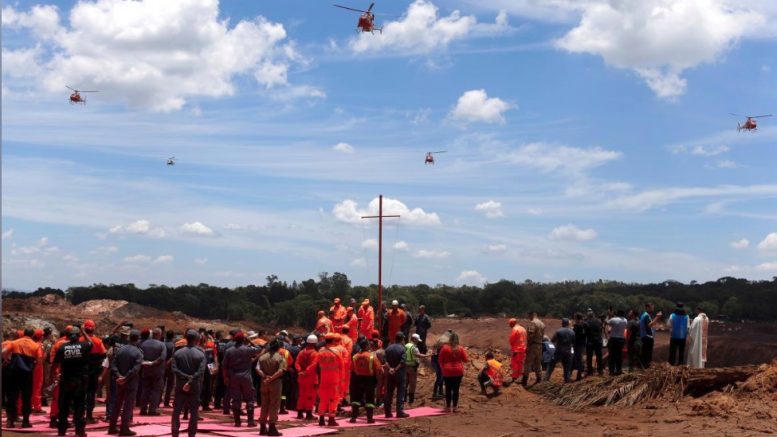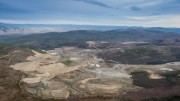All of those supply and demand, and price forecasts carefully assembled in late 2018 for iron ore have become obsolete in the wake of Vale’s devastating Corrego do Feijao tailings disaster in Brazil’s Minas Gerais state in late January, where the grim count now stands at 165 dead, with 160 people missing, mostly Vale employees.
The Dam 1 at Feijao — built in 1976 and reaching 86 metres high, with a crest length of 720 metres — collapsed in the afternoon of Jan. 25 and spilled 11.7 million cubic metres onto Vale buildings, engulfing a packed lunchroom downstream from the dam, parts of the nearby town of Brumadinho and long stretches of the Paraopeba River.
It ranks as Brazil’s worst environmental disaster and dwarfs the scale of Vale and BHP’s infamous Samarco Mariana dam disaster, also in Brazil, which killed 19 people in what had been one of the worst tailings disasters worldwide in recent memory.
Reuters reported that it had reviewed a third-party audit of the Feijao dam conducted last year that found “cracks in drainage channels and recommended improvements in monitoring.”
The magnitude of the spillover effects of the Feijao disaster on local populations, Vale and global iron ore markets is still coming into focus two and a half weeks after the accident.
The first thing the global mining community learned is that Brazil is burdened with up to 88 of the 700 tailings dams in the country having been built using the less secure and cheaper “upstream” method, where the dam wall is gradually built up in the upstream direction, so that eventually the top of the dam is directly overtop tailings — a particularly unsafe method in as rainy a country as Brazil, where tailings dams are water-saturated year-round.
It leads to the obvious question: how many more ticking time bombs in the form of unstable dams are there in Brazil?
The Wall Street Journal reports that, in the wake of the Samarco disaster, Vale repeatedly denied it operated any upstream tailings dams, and only acknowledged their presence in April 2017 in one line within an annual report. In its reporting, WSJ found plenty of other major miners having upstream tailings dams, which are better suited to arid climates.
Going forward, investors and other stakeholders will now demand more detailed tailings-dam information from mining companies, and it could expose miners to significant new liabilities, with upstream tailings dams so prevalent in the industry.
In response, Vale reaffirmed a decision it said it made in 2016 to decommission all 19 upstream tailings dams it operates in the country, of which 10 have already been decommissioned. The program will cost Vale R$5 billion, or US$1.4 billion.
Brazil’s National Mining Agency has already declared that upstream tailings dams will be banned in the country, and that existing ones must be taken down or converted to more stable forms.
As the world’s largest iron ore supplier, Vale had expected to produce 400 million tonnes of iron ore in 2019, but has already suspended 70 million tonnes of its production capacity in the wake of the disaster.
Iron ore prices have surged 25% since the disaster, with 62% iron-content iron ore trading at US$94.10 per tonne on Feb. 8 — its highest level since July 2014, and not far off highs above US$100 per tonne last seen in May 2014. Prices for 58% and 65% iron indexes have seen similar moves.
Another effect will be an overall lowering of iron ore quality globally, as top-quality Brazilian production is taken off the market and Australia’s lower-quality output gains relative prominence. The beneficiation of remaining Brazilian iron ore output will also be discouraged in the mid-term as it produces more wet tailings.
Vale’s shares have dropped 25% since the accident, while its major iron ore rivals BHP, Rio Tinto and Fortescue Metals all saw strong gains. Rio Tinto is now trading at levels not seen since 2008.
Citi has raised its earnings forecast for BHP and Rio Tinto 44% and 19% for 2019, and predicts 62% benchmark iron ore prices will exceed US$100 within three months.
Shipping has also been hit hard, too, with Capesize freight rates from Brazil to China falling 20% since the disaster.





Be the first to comment on "Editorial: Iron ore prices surge higher on Vale disaster"